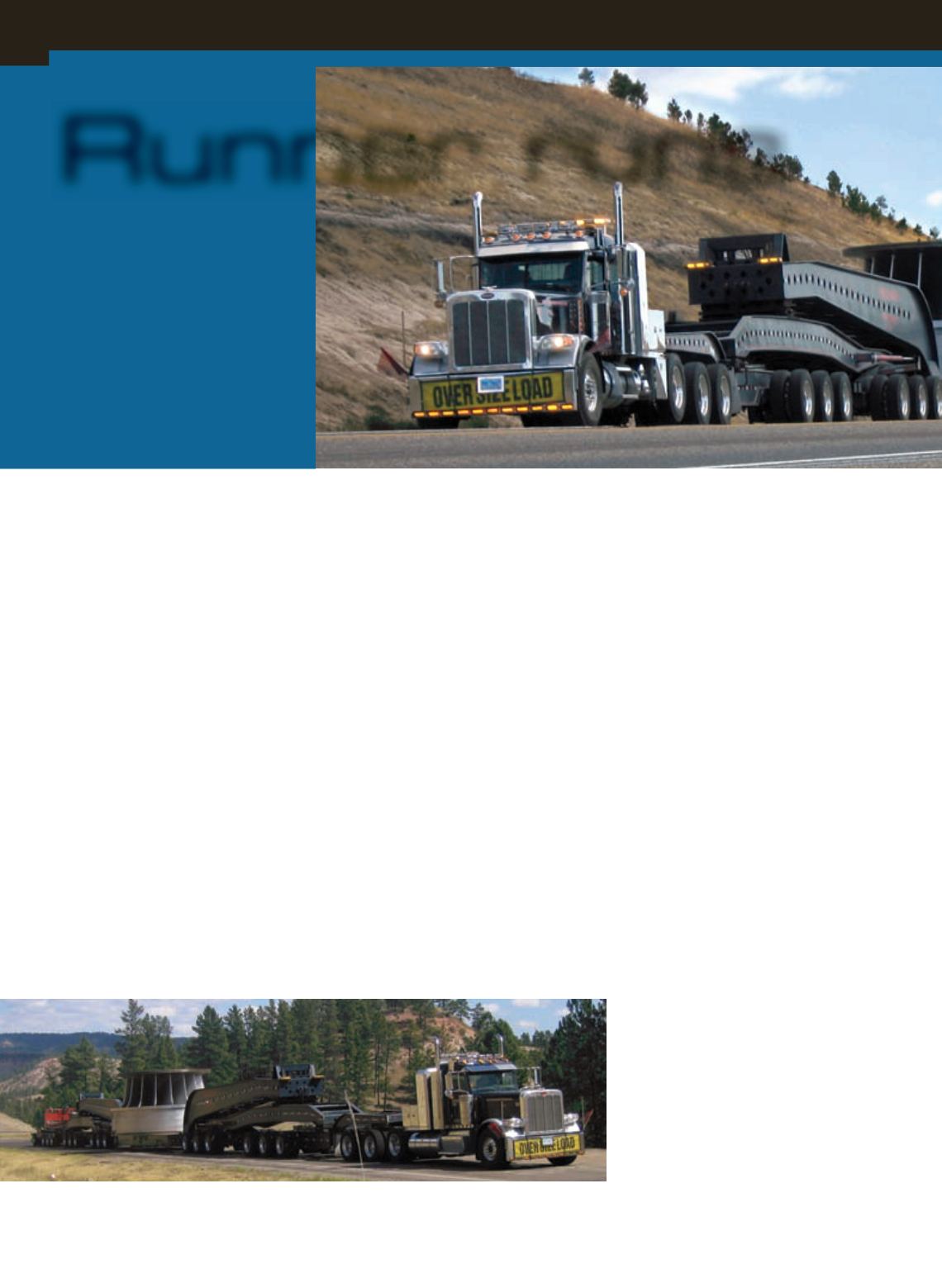
44
SITE REPORT
TRANSPORT
Specialized Inc. hauled
two giant turbine
runners some 13,384
permitted miles.
utilizing the S.S. Badger to ferry the load
across Lake Michigan to Wisconsin,” says
Lloyd.
Final routing for the first runner was
not determined until one week before the
move was scheduled to start. Final routing
for the first move had the turbine runner
traveling through Pennsylvania, Ohio,
Indiana, Illinois, Wisconsin, Minnesota,
South Dakota, Wyoming, Montana, Idaho
and Washington.
“Due to restrictions in Pennsylvania,
the route we had to traverse with the
first runner took three days to navigate
and the use of four state police escorts,”
says Lloyd. “Ohio required an ODOT
escort and state police escorts due to the
vast number of bridges we had to cross
at crawl speeds under 5 mph. Indiana
required a state bridge engineer to
accompany the load during a portion of
the route along with multiple state police
escorts.”
In Illinois, where the super load
permit process can take up to 14 days,
construction projects began on the route
the day before they were scheduled to
move. The permit process had to be
started over to obtain approval for routing
around the construction.
“We were able to work with the district
project engineers in Illinois to reduce the
permit processing time from 14 days to
three days,” Lloyd says. “Similar issues
were encountered in each state including
multiple state police escorts in Wisconsin,
Minnesota and Washington. The final
leg of the journey from the Idaho line
to Boundary Dam had to be completed
at night with the assistance of two state
police escorts and six private pilot cars.”
a site visit in Metaline Falls. Permit
applications were made with the state of
Washington to determine requirements
for the loading capacity of the trailer.
“It was determined that we would
need to use our special 20-axle trailer to
accommodate the permit requirements of
each state of travel including Washington,”
says Lloyd. “Our 20-axle trailer is a very
unique piece of equipment as it has a 600
hp Caterpillar engine mounted on the
last axle of the trailer providing both the
ability to carry weight on that axle while
also eliminating the need of a ‘push truck’
as required in some mountainous states
of travel. We are one of a very small group
of carriers in the nation that possess this
piece of equipment in our fleet.”
Route headaches
The first of the two runners was
scheduled to move in August 2012. Due
to the amount of construction across the
states of travel, permits for multiple routes
across multiple states were applied for and
approved.
“Every option was entertained including
ACT
SEPTEMBER 2013
Runner runs
Each state posed its own set of unique
challenges and requirements for travel.
Boundary Dam is located in a remote area of Washington where roads are used mainly for
camping and logging operations. It was determined that a night move would reduce the
impact the load would have on campers and loggers.
M
oving heavy components
a short distance can be a
challenge. When you add
a long and arduous route to the project,
things get even more complicated.
Planning and experience are the keys to
long super load hauls.
In May 2012, Aurora, OH-based
Specialized Inc. was contacted by Weir
American Hydro in York, PA to look into
the transportation of two turbine runners
from their facility in York to Boundary
Dam in Metaline Falls, WA. The turbine
installation was the culmination of a $60
million dollar investment by Seattle City
& Light to refurbish the dam’s power
generation capabilities.
“This move represented many challenges
from a transportation standpoint, most
notably that the runners were 19 feet
wide and weighed 183,000 pounds,” says
Specialized Inc.’s Project Manager Eric
Lloyd. “The shipping schedule proposed
moving them at the height of construction
season.”
Specialized’s team met with the Weir
American Hydro team and conducted


